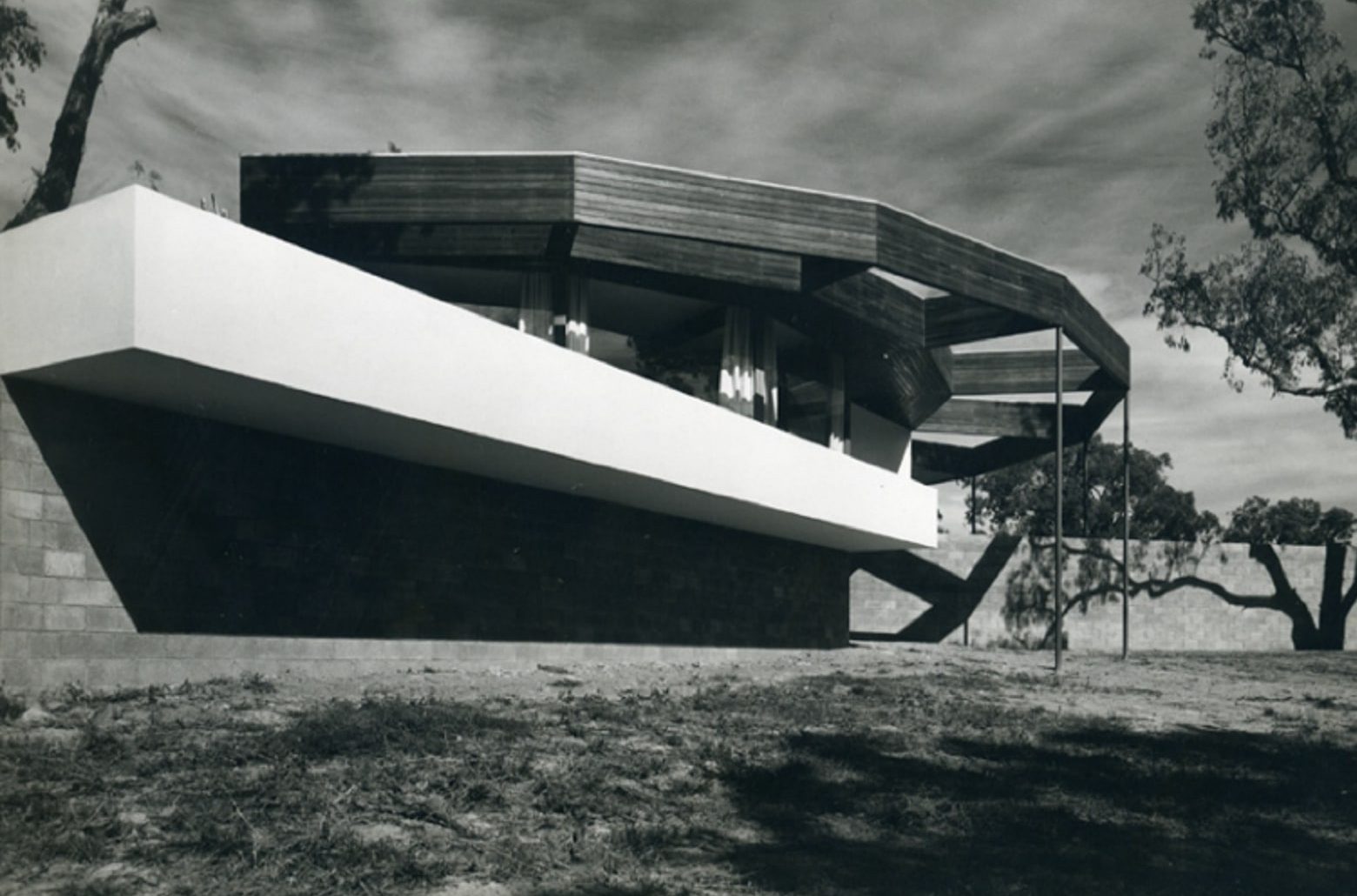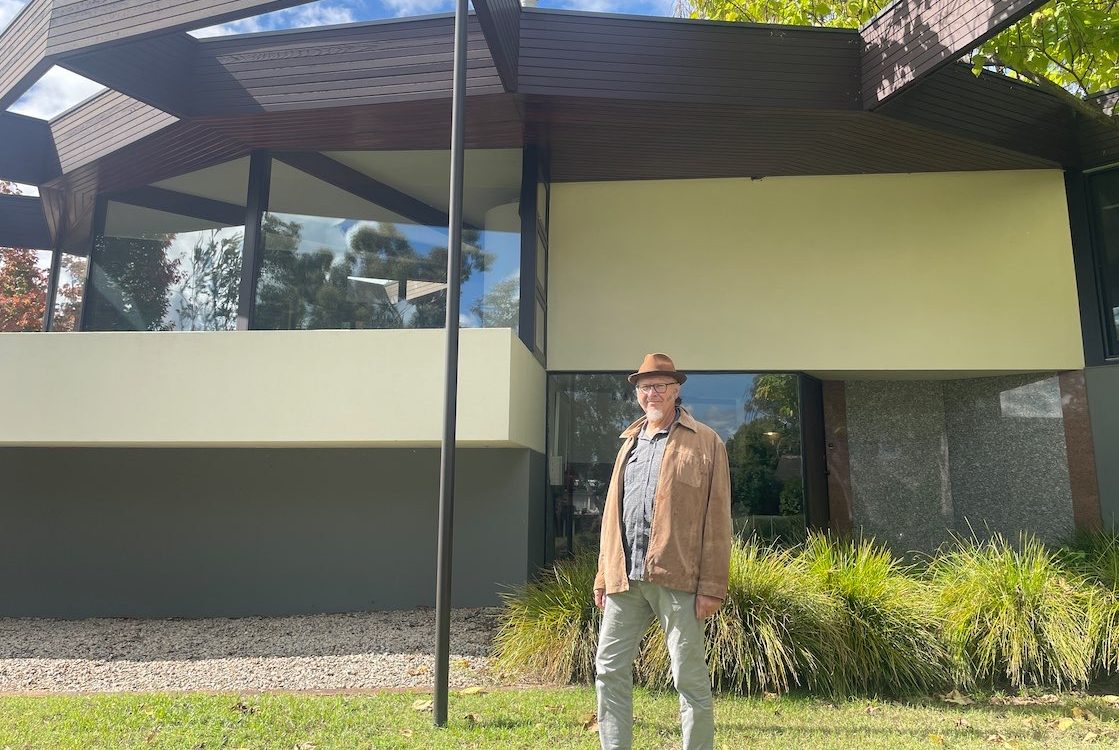
AT arts and design festivals in Canberra in recent years, much has been made of the “Canberra modern” movement in architecture.
Evident during the formative years of the Australian National University (formerly Canberra University College) when Canberra was a hotbed of intellectual thought.
On reaching its apogee in the ’50s and ’60s, it was a move towards modernist architecture bearing a strong resemblance to its earlier European antecedents, with figures such as Roy Grounds, Robin Boyd and Harry Seidler at the forefront.
One name is missing from the pantheon and now Canberra born-and-raised art historian, Roger Benjamin, has written a book, “Growing Up Modern, Canberra’s Round House and Alex Jelinek”, with a unique perspective on this phenomenon.
In part a love song to the house commissioned by his late father, the philosopher Bruce Benjamin, it is told through a series of focused narratives about brilliant émigrés such as architect Jelinek; his partner, the artist Lina Bryans; Benjamin’s parents and the housekeepers employed to look after the kids. It also offers an architectural analysis of how to care for a heritage property.
It’s also a rattling good yarn about the fun kids can have growing up in a designed house. Even the family cats get a special mention for appreciating the heated mosaic tiles of the toilet floor.
I share with Benjamin the powerful but all-too-rare Australian experience of having grown up in a purpose-built, architect-designed house and can relate to his excitement over small touches, like his father’s insistence on a vegetable-drying cabinet.

Reactions will depend on who’s reading. If you’re an architect, you’ll probably view the house itself as the main character. If you’re a word person, like me, it’s the buzz around the curved dining table, where thrilling discussions with leading minds of the time took place, with Manning Clark and AD Hope regular visitors. There’s even a poem written by Hope to mark Bruce Benjamin’s 31st birthday.
For art readers there’s the special attention paid to the artworks with which the Benjamin parents filled the house in 1957, paintings by Ian Fairweather, 18 seminal pieces commissioned from Melbourne furniture artist Schulim Krimper and two family treasures, a Khmer Buddha head and a fine Chinese scroll for which that curved dining table was designed.
The house, which won Australian House of the Year in 1958, was the first one designed by Czech émigré Alex Jelinek and part of the book is given over to recounting Jelinek’s fascinating background and art influences, worth a book in itself, as Benjamin’s interviews with him were to reveal.
A teenager during Nazi-occupied Czechoslovakia, he later became an expert draughtsman and studied at the Prague Academy of Fine Arts, taking classes in painting and, relevant to the house he designed at 10 Gawler Crescent, Deakin, in landscape architecture.
Loathing the post-war Communist regime, he joined in hijacking a plane out of Czechoslovakia, becoming what he called “an architectural refugee”.
The history of the house extends much further than its maker.
There are the tastes and eccentricities of Bruce Benjamin who collected old cars, such as a 1955 Aston Martin, his activist ABC scriptwriter (later broadcaster) mother Audrey and her cooking, a family wedding at the house and young Roger using his spare time to carve a full-sized Viking war-mace.
After Bruce’s death in 1963, Audrey commissioned changes from a Canberra architect, something Benjamin is now inclined to consider disrespectful.
But he admits that the “round house” – we learn that it’s not truly “round” but “a Pythagorean spiral” — meant it wasn’t always sympathetic to a single mum with four growing children.
After she sold the house in 1990, it was owned by two different families, including a stone mason for the new Parliament House, who introduced stonework unsympathetic to Jelinek’s Modernist concept of custom-made concrete blocks and carefully selected wood.
Roger Benjamin had an opportunity to undo some of the changes when, after taking a lectureship at the ANU, he re-purchased the family home, thinking, “ownership was the only true protection” and moved there in early 2000.
Following the Burra Charter, used in the conservation of Australian heritage properties, he was to find that replacing “like with like” was not always possible.
If this book is a story about a house, there’s a happy ending.
Roger Benjamin took a job in Sydney and sold the house.
The present-day owners of the house, which was heritage-listed in 2003, are sympathetic to the original design and have been generous hosts to lovers of fine architecture and design.
They even let me in for a look around the curves in the house – what a treat.
“Growing Up Modern, Canberra’s Round House and Alex Jelinek” (Halstead Press).
Who can be trusted?
In a world of spin and confusion, there’s never been a more important time to support independent journalism in Canberra.
If you trust our work online and want to enforce the power of independent voices, I invite you to make a small contribution.
Every dollar of support is invested back into our journalism to help keep citynews.com.au strong and free.
Thank you,
Ian Meikle, editor



![For graphic designer Tracy Hall, street art is like any artwork, her canvas has been swapped out for fences and plywood, her medium changing from watercolours to spray paint.
A Canberra resident for 13 years, Tracy has been a street and mural artist for the past five.
Her first exploration into grand-scale painting was at the Point Hut toilets in Banks five years ago. “They had just finished doing up the playground area for all the little kids and the words [of graffiti] that were coming up weren’t family friendly,” she says.
“So I ended up drawing this design and I got approval for the artwork.”
Many of Tracy’s time-consuming artworks are free, with thousands of her own dollars put into paint.
@traceofcolourdesigns
To read all about Tracy's fabulous street art, visit our website at citynews.com.au or tap the link in our bio! 🎨🖌
#canberranews #citynews #localstories #canberrastories #Citynews #localnews #canberra #incrediblewomen #journalism #canberracitynews #storiesthatmatter #canberralocals #artist #streetart #streetartist #StreetArtMagic](https://scontent.cdninstagram.com/v/t39.30808-6/490887207_1225841146218103_6160376948971514278_n.jpg?stp=dst-jpg_e35_tt6&_nc_cat=106&ccb=1-7&_nc_sid=18de74&_nc_ohc=MUiEmedc4VAQ7kNvwHTUMX_&_nc_oc=Adk-5HjcsfQwB-n_l8zetmr0YqMaupGjrl2gNVCZdsmkxwn-oqjBg_V7pLtGggCE43s&_nc_zt=23&_nc_ht=scontent.cdninstagram.com&edm=ANo9K5cEAAAA&_nc_gid=ArypbXJrhJlgkEK_eVch4g&oh=00_AfG8ftIXR22MgCATlN0LVjY-fBO4qR2nx6yZcRB9-XzjrQ&oe=6808E914)




Leave a Reply